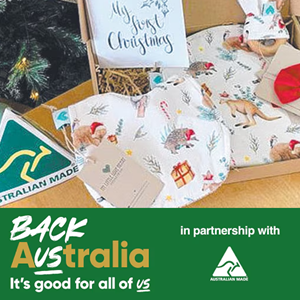Australian ownership is back in the spotlight, following comments from a group of iconic Aussie brands seeking to raise awareness around the ownership structures of the businesses that produce the products on our retail shelves.
This passion for supporting Aussie farmers, producers, businesses and Australian consumers is one shared by many, including Australian Made Campaign Ltd (AMCL)—the not-for-profit organisation that administers and promotes the famous Australian Made Logo.
While this unprecedented level of support for ‘buying local’ is welcomed, it’s important that the ‘made in Australia’ claim is not confused with other aspects of ‘Australianness’. Here, the ‘Australian Made’ claim is often conflated with the ‘Australian Owned’ claim. While both claims resonate with some shoppers, they mean very different things and are not interchangeable.
Add the ‘Designed in Australia’ claim into the mix, along with myriad Aussie marks and symbols, and it’s easy to see how consumers can quickly become overwhelmed and confused, or in some cases intentionally mislead. Intentional or not, all such claims are policed by the ACCC.
The ‘made in Australia’ claim has never been more powerful. It tells consumers that the products that carry the claim are made to some of the highest manufacturing and safety standards in the world, with inputs often sourced from Australia’s clean green environment, regardless of the ownership structure of the producer. It also makes a compelling statement about generating local jobs and economic activity.
It’s important to note that the famous Australian Made logo is Australia’s only registered country of origin certification trademark and is used to identify products that have been made in Australia, regardless of the ownership of the brand owner.
The Australian Made logo is Australia’s most trusted, recognised and widely used country of origin symbol, and is underpinned by a third-party accreditation system administered by AMCL. The logo can only be used on products which meet the criteria set out in the Australian Consumer Law and the Australian Made Logo Code of Practice.
In 2016, the Australian Government incorporated the Australian Made logo into its new country of origin food label, which, on July 1, 2018, became mandatory for most Australian food products sold in Australia.
Businesses are required to label food and beverage products sold in Australia in accordance with the Australian Government's country of origin food labelling legislation. More information is available here.
While the Australian Made logo provides some country-of-origin certainty from an on-product branding perspective, consumers still need to navigate the numerous online retailers, e-commerce platforms that offer Australian products for sale, as well as the many well-intentioned social media groups presenting information about Australian products and the issues affecting their production and sale.
Here, consumers need to maintain their vigilance, researching, questioning and only buying and engaging with trusted platforms with the appropriate compliance and governance protocols in place to ensure the Aussie products are genuine and the information accurate.
Despite the challenges, it’s important to remember that Australian producers and industry need the support of Aussie consumers more than ever.
With that in mind, let’s support our Aussie manufacturers regardless of their ownership structures—some manufacturers will be Australian-owned businesses and some will not.
Regardless, our Aussie manufacturers are all making products to some of the highest standards in the world, creating jobs and positive knock-on effects throughout the supply chain, to ultimately help deliver a more prosperous and self-sufficient Australia.

Supporting ‘Buy Local’ initiatives
Published
Thursday, September 26, 2024
Share
Our partners
Proudly supporting Australian Made Campaign and the strength of the logo















